
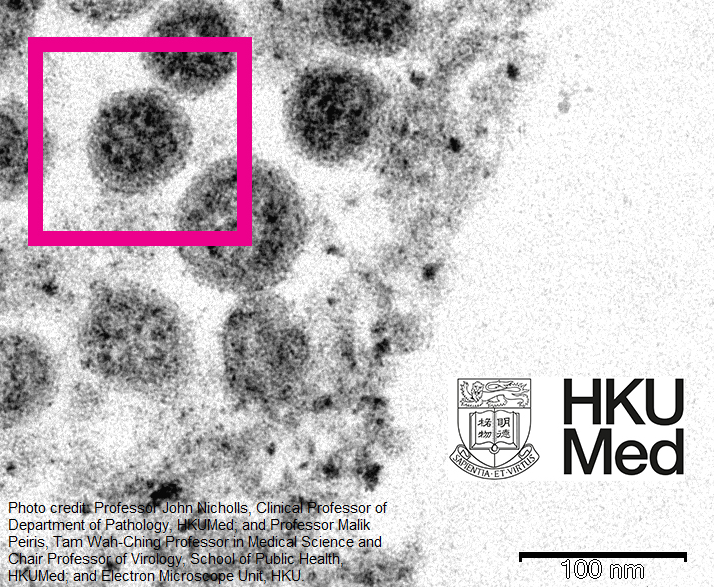
(Photo credit: Professor John Nicholls, Clinical Professor of Department of Pathology, HKUMed; and Professor Malik Peiris, Tam Wah-Ching Professor in Medical Science and Chair Professor of Virology, School of Public Health, HKUMed; and Electron Microscope Unit, HKU.)
Before analyzing “whether we should worry about the Omicron variant or not”, let us first get acquainted with the SARS-CoV-2 Omicron variant, which only emerged in South Africa on 9 November 2021, swept the world by the end of the next month and made words like breakthrough infections, third doses and boosters into hot searches.
The highly mutated spike protein makes it more difficult for us to defend against viruses.
The electron microscopic image at the beginning of the article is the world’s first “Omicron” photo released by Li Ka Shing Faculty of Medicine, The University of Hong Kong (HKUMed) on December 8, 2021:
The surface of the virus particle has a crown-like shape, which is the spike protein (S protein) used by the virus to invade the cell.
The virus relies on these spike proteins to bind to receptors on the cell surface, triggering the cell’s endocytosis mechanism to open the door to a dangerous foe and then entrap the cells to help them replicate new virus particles so that they can infect more cells.
Therefore, the spike protein is not only the key for the virus to invade cells but also the target for the vaccine to train the immune system to “precisely” identify and capture the virus. The greater the degree of their mutation, the easier it is for vaccine-induced antibodies to miss them.
From the following picture comparing the three-dimensional models of “Delta” and “Omicron” spike proteins published by the prestigious Bambino Gesu hospital in Rome on November 27, 2021, you can understand why Omicron is more transmissible than Delta.
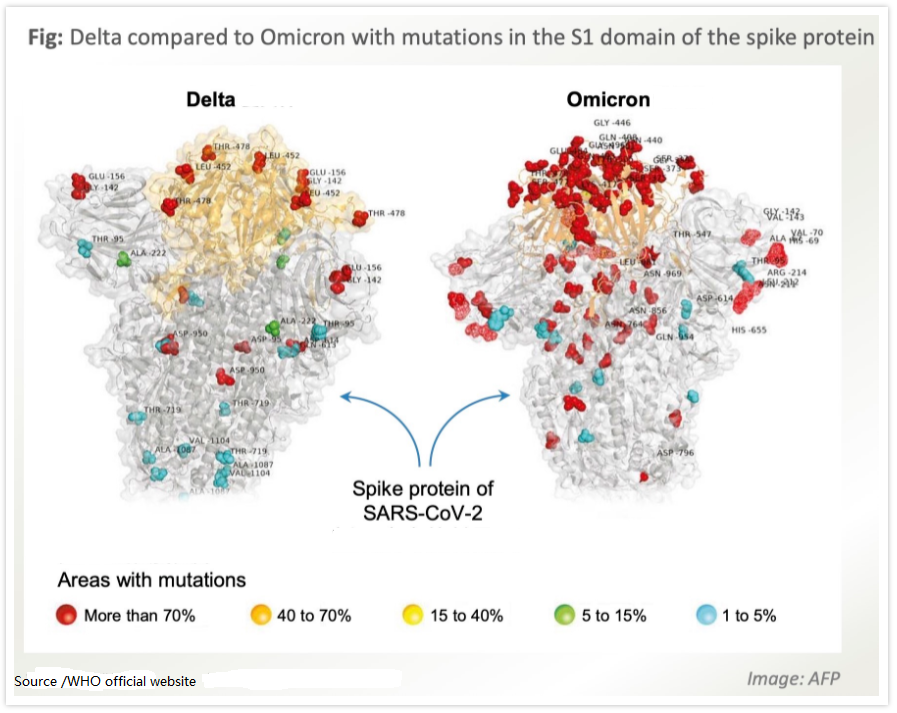
(Source/WHO official website)
The positions marked by color are the mutated regions that are different from the original virus strain. According to analysis, there are at least 32 key mutations in the spike protein of “Omicron”, far exceeding “Delta”, and the highly mutated (red) regions are also concentrated in the positions that interact with human cells.
Such mutations make it easier for “Omicron” to invade human cells to reproduce, to spread among people and to evade existing vaccine-induced immunity, leading to breakthrough infections or reinfections.
“Omicron” easily infects the bronchus but is less likely to penetrate into the lungs.
According to the research results published by HKUMed on its official website on December 15, the Omicron variant replicates around 70 times faster than Delta and the original Covid-19 strain in human bronchus but less well in human lung tissue.
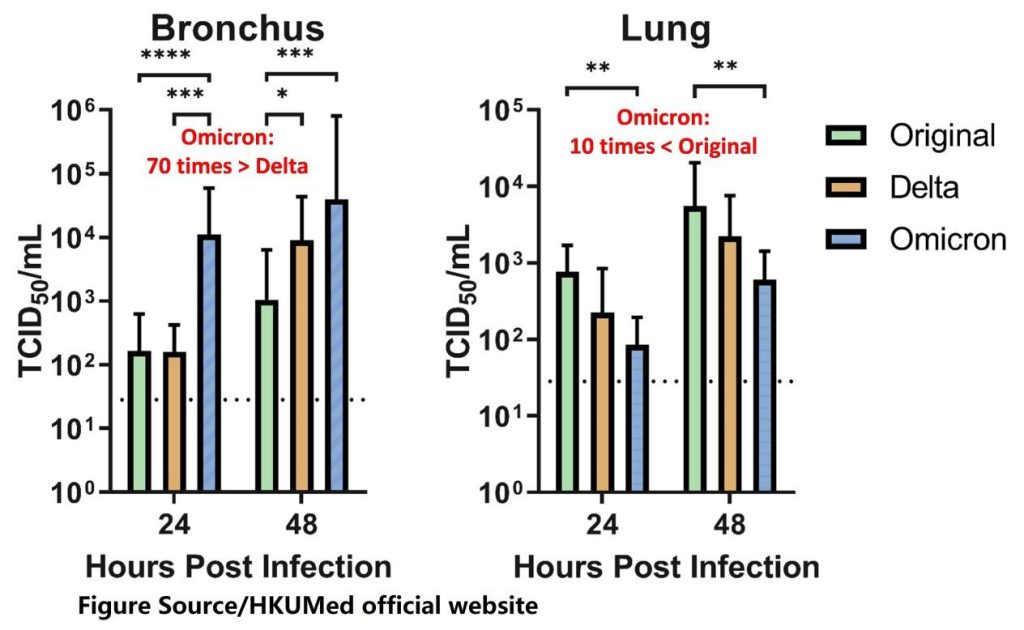
(Figure Source/HKUMed official website)
This may explain why “Omicron” spreads quickly while the initial symptoms of infection (hoarse throat, stuffy nose) can easily be mistaken for a common cold but the severity of the disease is relatively low.
But don’t take it lightly because “Omicron” is less likely to cause severe illness. Who knows what the final outcome awaits us?
What’s more, there are “Delta” and “Influenza” still staring at us at the same time! The best way to avoid them is to try to maintain our immunity at a high level every day.
So we don’t need to worry too much about “Omicron” but we must be careful to take precautions.
What would it look like if a cell was infected with the Omicron variant?
Take a look at the following electron microscopic image provided by HKUMed.
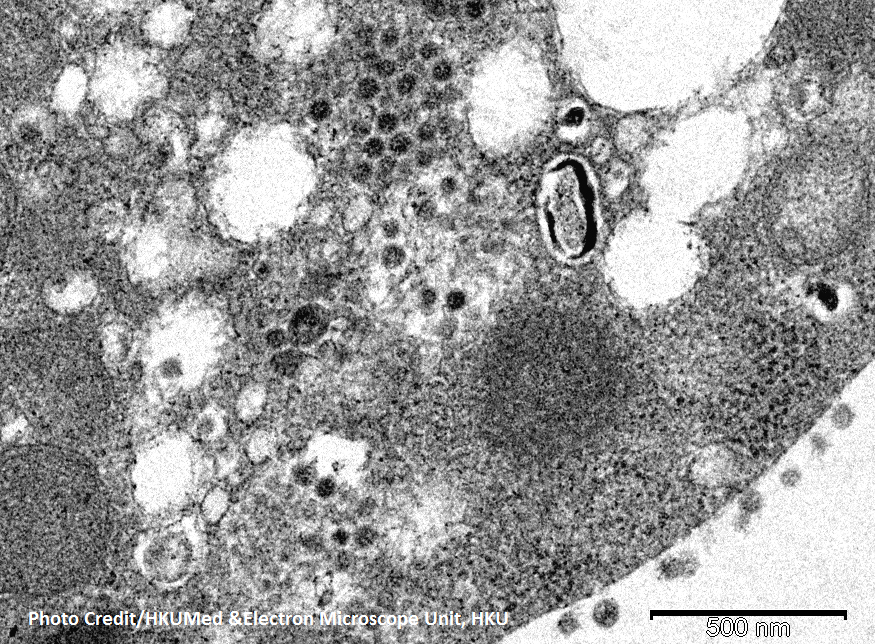
(Photo Credit/HKUMed & Electron Microscope Unit, HKU)
This is the electron micrograph of a Vero (monkey kidney) cell 24 hours after infection with the Omicron variant of SARS-CoV-2. You can see that a lot of viruses are replicating in the cell vesicles, and the virus particles that have been replicating are being released onto the cell surface ready to do their job.
This is just a new virus reproduced by the virus using “one cell”. It is really fast! Fortunately, it’s just an in vitro cell experiment. If it happens in vivo, we don’t know how many cells will suffer, and the infected person at this time is often asymptomatic; when someone feels wrong and wants to prevent it, it’s too late!
After infection, some viruses will be inside the cell while some will be outside the cell. The immune system will deal with the viruses in different ways.
Antibodies induced by vaccination can only capture (neutralize) the virus outside the cell. If the virus can be intercepted as soon as it slips into the cell, things are relatively simple; if the virus infects the cell, the immune cells need to secrete interferon to block viral replication in cells and reduce the amount and speed of viral proliferation and also need “killer T cells” or “natural killer cells” to kill infected cells.
Both viruses caught by antibodies and killed infected cells need macrophages to pick up the bits. Before this, macrophages and dendritic cells must also help to send signals to “helper T cells”, the supreme commanders of the immune system, which then give correct orders to produce cytotoxic T cells and neutralizing antibodies.
Vaccination can induce antibodies, and antiviral drugs can inhibit virus replication in cells and slow down the spread of the virus. However, to really wipe out the virus, it needs every element of the immune system to be fully mobilized and reinforced.
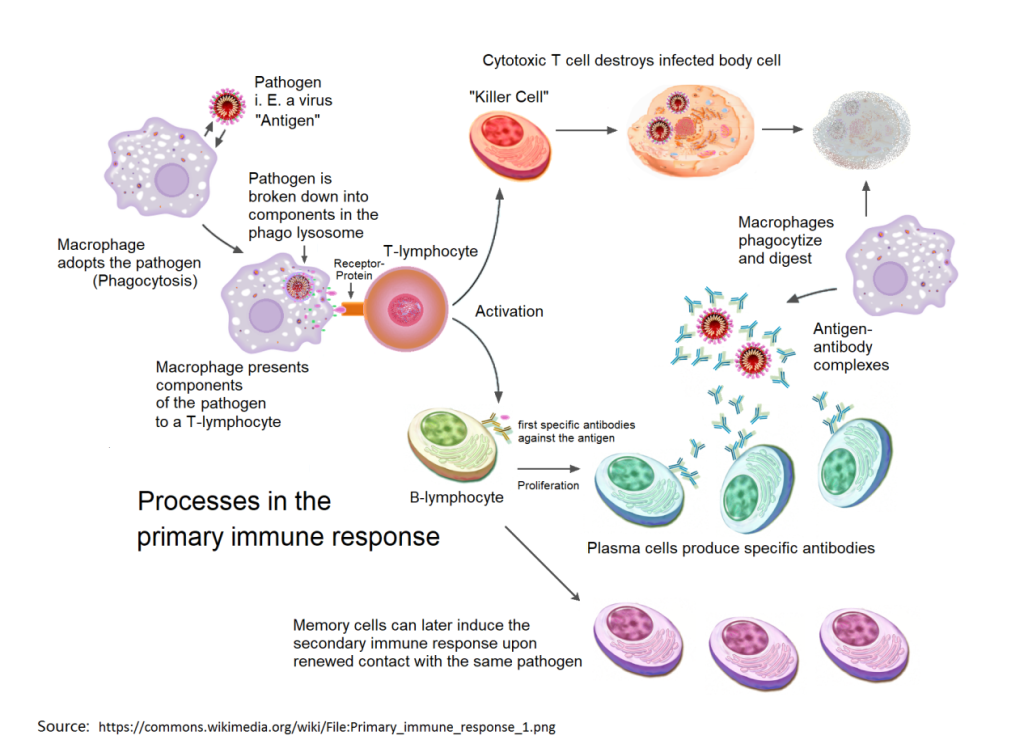
So, after being vaccinated, how to comprehensively increase immune cells, strengthen immune response, improve immune function, promote immune balance, and avoid excessive inflammation?
Since research in the 1990s, Ganoderma lucidum has been proven to accelerate the maturation of dendritic cells, regulate the differentiation of T cells, stimulate the production of antibodies by B cells, promote the differentiation of monocytes-macrophages, and enhance the activity of natural killer cells, help with the proliferation of various immune cells and the secretion of various cytokines, and have a comprehensive regulatory effect on the immune system. These effects are all summarized in the diagram below.
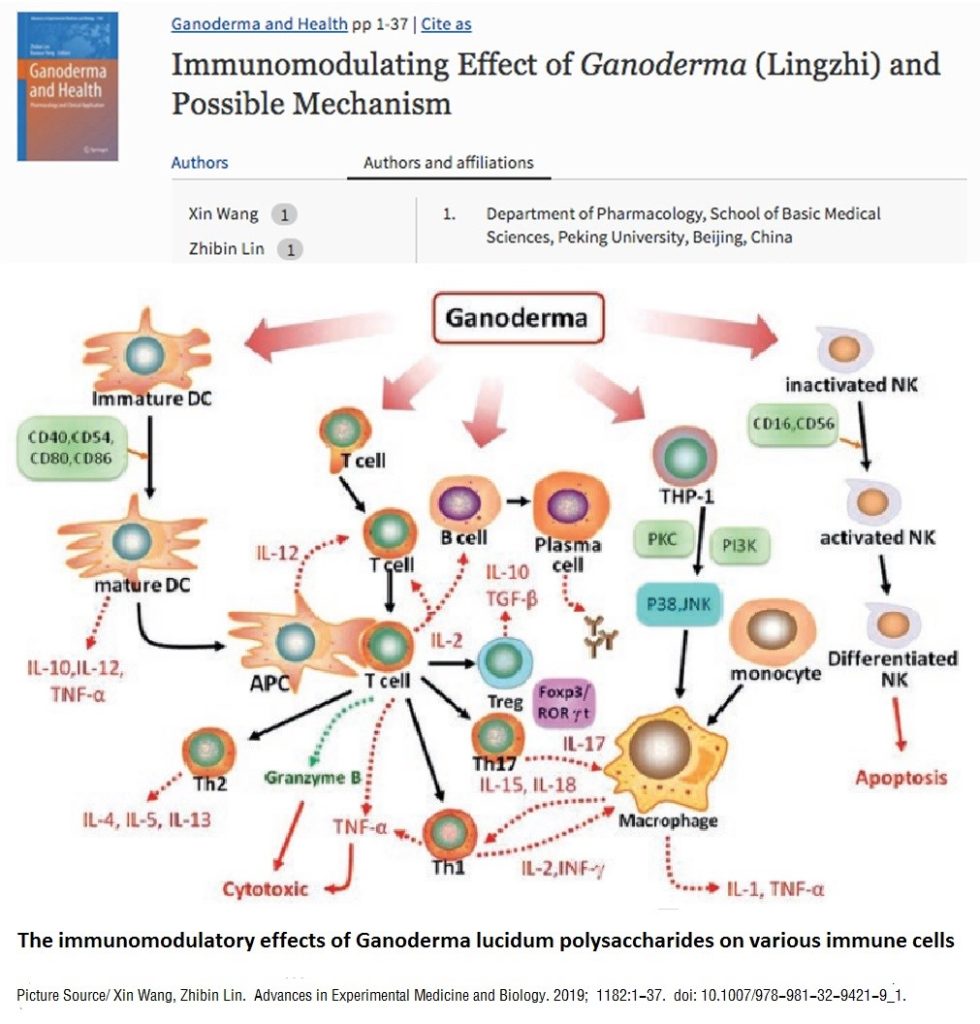
In the follow-up, we will explain to you more in-depth “why Ganoderma lucidum can help us strengthen the immunity we need to fight viruses” through several papers that have been published in international journals. Before that, we hope you have started to eat Ganoderma lucidum because daily immunity is very important. Only by maintaining a good immune system every day can we ensure our safety every day.
END

★ This article is published under the exclusive authorization of the author, and the ownership belongs to GANOHERB.
★ The above works cannot be reproduced, excerpted or used in other ways without the authorization of GanoHerb.
★ If the works have been authorized to be used, they should be used within the scope of authorization and indicate the source: GanoHerb.
★ For any violation of the above statement, GanoHerb will pursue the related legal responsibilities.
★ The original text of this article was written in Chinese by Wu Tingyao and translated into English by Alfred Liu. If there is any discrepancy between the translation (English) and the original (Chinese), the original Chinese shall prevail. If readers have any questions, please contact the original author, Ms. Wu Tingyao.

Pass on the Millennia Health Culture
Contribute to Wellness for All



